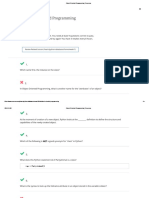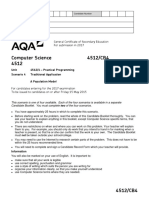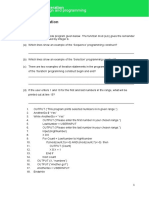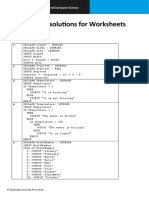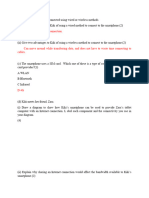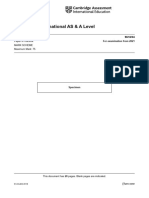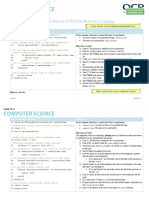0% found this document useful (0 votes)
471 views17 pagesTrace Tables: Dry Running of Flowcharts Is Basically A Technique To
A trace table can be used to record the results of each step of an algorithm to determine its purpose and check for correct logic and functioning. The document provides examples of trace tables for algorithms that input and process data such as engine sizes, parcel weights, child heights, item weights for loading a trailer, and temperatures. Completing the trace tables involves recording the value of each variable as it changes through each step to dry run the algorithms and verify their outputs.
Uploaded by
Ruchini ThejakaCopyright
© © All Rights Reserved
We take content rights seriously. If you suspect this is your content, claim it here.
Available Formats
Download as PDF, TXT or read online on Scribd
0% found this document useful (0 votes)
471 views17 pagesTrace Tables: Dry Running of Flowcharts Is Basically A Technique To
A trace table can be used to record the results of each step of an algorithm to determine its purpose and check for correct logic and functioning. The document provides examples of trace tables for algorithms that input and process data such as engine sizes, parcel weights, child heights, item weights for loading a trailer, and temperatures. Completing the trace tables involves recording the value of each variable as it changes through each step to dry run the algorithms and verify their outputs.
Uploaded by
Ruchini ThejakaCopyright
© © All Rights Reserved
We take content rights seriously. If you suspect this is your content, claim it here.
Available Formats
Download as PDF, TXT or read online on Scribd
/ 17
